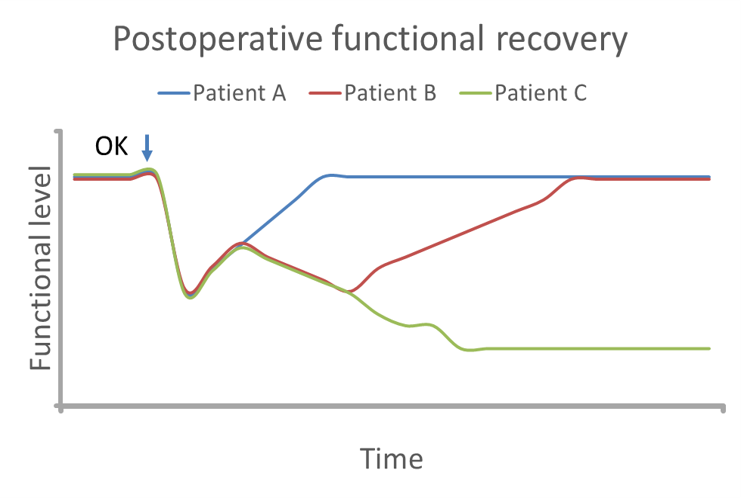Prediction of patient deterioration
In critical care medicine, timely identification and intervention in response to patient deterioration play a pivotal role in shaping clinical outcomes. The ability to foresee and act upon early warning signs can be a determining factor between life and death. Failure to rescue, defined as the inability to promptly recognize and address deteriorating patient states, poses a significant challenge in critical care settings. Studies indicate that a substantial proportion of adverse events leading to morbidity and mortality in hospitals are preceded by warning signs that go unnoticed or are not acted upon in a timely manner. Current methods for predicting patient deterioration are mostly based on scoring systems that assigns numerical values based on a few vital signs such as heart rate, respiratory rate, blood pressure, and body temperature. Since this methods rely on predetermined threshold, do not work well in all patient populations. The low specificity may lead to alarm fatigue. Moreover they are unable to capture context, and they may miss transient and rapid changes as they are calculated at predefined intervals.
 In this line of research, we investigate novel approaches to predict patient deterioration timely and more accurately, by fully exploiting the wealth of information available in the hospitals.
In this line of research, we investigate novel approaches to predict patient deterioration timely and more accurately, by fully exploiting the wealth of information available in the hospitals.
In a first study, we investigated whether unanticipated admission to the intensive care unit (ICU) could be predicted using variables extracted from the electronic medical record acquired at different phases of the perioperative period (before, during, and after surgery). We achieved an area under the receiver operating characteristic curve of 0.86 (95% CI 0.83–0.88) by combining intra- and early postoperative factors with preoperative patient factors. This emphasizes the need for clinical decision support tools in post anesthesia care units with regard to postoperative patient allocation.
We are currently working on improving the prediction model by investigating different machine learning classifiers, and analyzing the contribution that features from different perioperative phases have on the prediction results.
Contributors and partners
BM/d lab:
- Tom Bakkes (PhD student)
- Eveline Mestrom (former PhD student)
- Uzay Kaymak (part-time professor)
- Arthur Bouwman (part-time professor)
- Massimo Mischi (full professor, head of BM/d)
Partners:
- Catharina Ziekenhuis Eindhoven
- Philips Research
Funding:
- Eindhoven Medtech Innovation Center (e/MTIC)
- TKI-HTSM MEDICAID - Top Sector Holland High Tech

